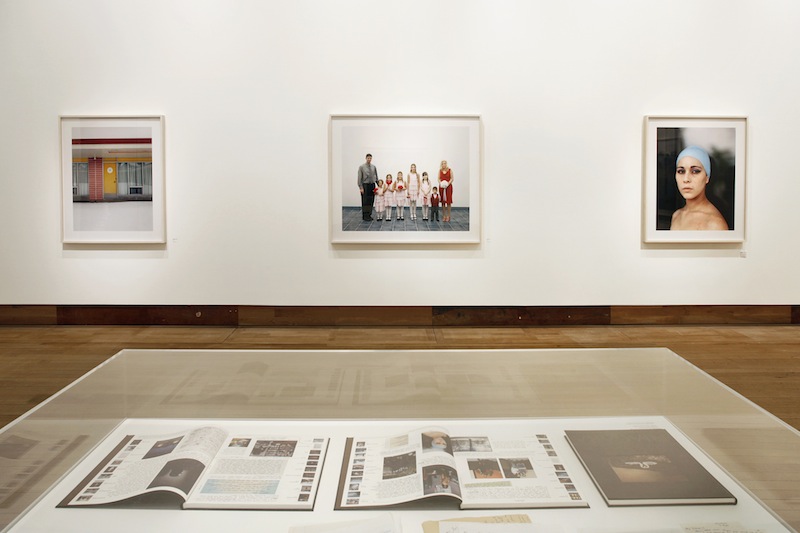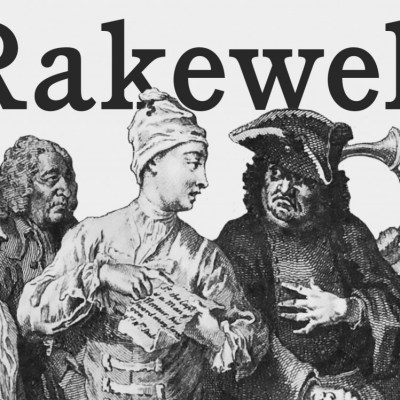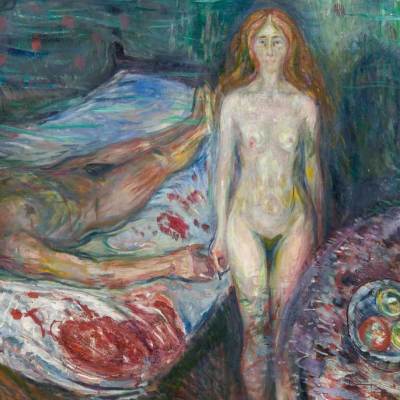Alec Soth is one of the most important photographers working today, and the American lives and landscapes brought together in ‘Gathered Leaves’ at Media Space show exactly how and why. I should admit a certain bias: having followed Soth’s work and writing online over the last eight years, ‘Gathered Leaves’ – Soth’s first major solo show in the UK – has felt a long time coming. I’m extremely happy it’s finally arrived.
Broadly speaking, Soth is a documentary photographer: he belongs to Magnum, the ultimate documentary collective, and his best-known photographs depict people and places discovered by driving the length and breadth of the US. But his work is distinguished by a particular sense of what it means to ‘document’. For Soth, in his own words, it is not about ‘capturing this decisive moment,’ but about ‘actually stopping things,’ so he can stare at them. It’s a way of giving himself ‘permission to look’. The sense of that frank and permitted stare pervades Soth’s work. His photos are studies in the best possible sense of the word: the products of close attention and deep attentiveness.
What that attentiveness amounts to is summed up by the first photo in the exhibition: Charles, Vasa, Minnesota (2002). It’s the shot that, chosen for publicity posters for the 2004 Whitney Biennial, helped launch Soth’s career. Dressed in overalls, clutching a model plane in each hand, Charles greets you front on, his face both the centre of attention and barely visible behind his glasses, balaclava and beard. He’s a strange mixture of the tough and the vulnerable: his beard and overalls one thing, the toys in his hands another; and behind the reflections of his glasses, his gaze can’t settle the argument. Beyond him lies the bleak landscape of Minnesotan midwinter.
Charles is a gift of a subject, and on the surface Soth does little to augment or interfere with what he’s given. A simple composition, no fill-in lighting, a restrained, unsaturated palette – all there to let Charles speak for himself. But beneath the surface is everything that makes Soth’s work special. The composition and pose are neatly melded into a series of juxtapositions that run both in and out of the frame. Posing Charles on a flat, tarpaper roof, debris scattered in the snow around his feet, Soth gets to have the shot drop away to pure landscape. Charles himself stretches between the two, the top of his beard lined up with the horizon, the dirty white of his balaclava fading into the sky, the same white-dark flip in the reflection of his glasses. The landscape reminds you that Charles’ clothes and beard are the practical protections of someone who has to work outside through Minnesotan snow. But rather than setting up a simple binary pitting man against chill nature, Soth domesticates the whole thing and unbalances the relationship. The toy planes, the house window and green weatherboarding intruding to the right do to the conceptual frame what they do to the composition: make it just asymmetrical enough to be interesting. And the patterning stretches outside the frame.
Charles appears in the 2004 collection Sleeping by the Mississippi, which opens with a quotation from the aviator Charles Lindbergh. Turn the page from Charles, and the photo that follows is of Lindbergh’s boyhood bed, outside, tucked into a porch corner. The planes begin to make sense, the balaclava and glasses become, as well as themselves, the flying cap and goggles famous from Lindbergh’s portraits. It is almost too much to note, on top of all this, that the portrait dates to early 2002, just a few months after 9/11. The planes in Charles’ hands are his toys, and Lindbergh’s planes, and something else too – and none of these added layers detract from the sense that what Soth is interested in, at this moment, is the man in front of him.
The adjectives that come to mind for Soth’s work are those that sum up his ability, and his desire, to take his subjects on their own terms without flattering or patronising them: honesty and tenderness. With a few exceptions – particularly in Broken Manual’s hermits and loners – his subjects are bearers of a distinctly quotidian oddness. From the 2004 series Sleeping by the Mississippi, the photo Bonnie (with a photograph of an angel) has its subject clutching a snap of a vaguely winged smudge of cloud, set in a gilded frame. There is no hint of ironic distance; it appears to be enough for Soth that Bonnie believes it’s an angel. The down-at-heel hotels and lovers of 2006’s Niagara have the same feeling: the couples in the book, along with Melissa, sitting in her wedding dress on a motel walkway, may be destined for the same heartbreak recorded in the breakup letters scattered through the collection, but that doesn’t invalidate the state Soth catches them in. Niagara Falls itself is shabby and faded, and crammed with romantic ideals that are their own undoing, but, Soth seems to suggest, that has its own beauty.
As a fan, the inevitable complaint about ‘Gathered Leaves’ is that there could be more. Among the missing work is Soth’s moving Dog Days, Bogotá – for his adopted Columbian daughter – a collection that includes some of his best work, and reveals his ability to do with still-lives what he does with portraits. But there is more than enough in this exhibition to show why Soth is such an important photographer.
One criticism is of MACK’s catalogue. Rather than reproducing the shots in the exhibition, MACK has chosen to reprint the four represented collections in their entirety, but in miniature, boxing up with a selection of much larger postcards. It’s a neat little set, particularly the postcards, but the reprinted collections are simply too small to see the real details of Soth’s work. The dolls-house dimensions are particularly frustrating given the irony of the choice: Soth mostly works in ultra-large format, making the productions roughly a tenth of the size of their original negatives. The only solution, really, is to go and see the show for yourself.
‘Gathered Leaves: Photographs by Alec Soth’ runs at Media Space, the Science Museum, London until 28 March 2016.










